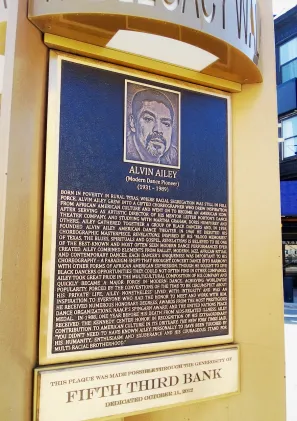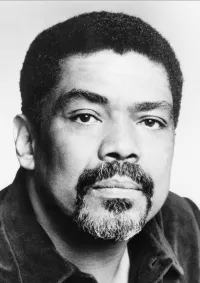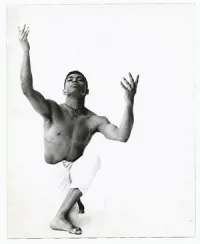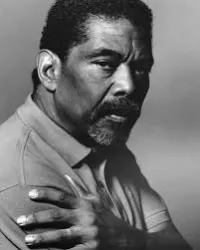Biography
1931 - 1989
"One of the processes of your life is to constantly break down that inferiority, to constantly reaffirm that I Am Somebody."
- Alvin Ailey
Born in poverty in rural Texas, where racial segregation was still in full force, Alvin Ailey grew into a gifted choreographer who drew inspiration from African-American culture and went on to become an American icon. After serving as Artistic Director of his mentor Lester Horton’s Dance Theater Company, and studying with Martha Graham, Doris Humphrey and others, Ailey gathered together a group of black dancers and, in 1958, founded Alvin Ailey American Dance Theater. In 1960 he debuted his choreographic masterpiece, Revelations. Inspired by his "blood memories" of Texas, the blues, spirituals and gospel, Revelations is believed to be one of the best-known and most often seen modern dance performances ever created. Ailey combined elements from ballet, modern, jazz, African ritual and contemporary dances. Each dancer’s uniqueness was important to his choreography – a paradigm shift that brought concert dance into harmony with other forms of African-American expression. Though he sought to give black dancers opportunities they could not often find in other companies, Ailey took great pride in the multi-cultural composition of his company and quickly became a major force in modern dance, achieving worldwide popularity. Forced by the conventions of the time to be circumspect about his private life, Ailey nonetheless lived with integrity and was an inspiration to everyone who had the honor to meet and work with him. He received numerous honorary degrees, awards from the most prestigious dance organizations, NAACP’s Spingarn Award, and the United Nations Peace Medal. In 1988, one year before his death from AIDS-related illness, Ailey received the Kennedy Center Honor in recognition of his extraordinary contribution to American culture. In its obituary, The New York Times said, “You didn’t need to have known Ailey personally to have been touched by his humanity, enthusiasm and exuberance and his courageous stand for multi-racial brotherhood.”
1931 - 1989
"One of the processes of your life is to constantly break down that inferiority, to constantly reaffirm that I Am Somebody."
- Alvin Ailey
Born in poverty in rural Texas, where racial segregation was still in full force, Alvin Ailey grew into a gifted choreographer who drew inspiration from African-American culture and went on to become an American icon. After serving as Artistic Director of his mentor Lester Horton’s Dance Theater Company, and studying with Martha Graham, Doris Humphrey and others, Ailey gathered together a group of black dancers and, in 1958, founded Alvin Ailey American Dance Theater. In 1960 he debuted his choreographic masterpiece, Revelations. Inspired by his "blood memories" of Texas, the blues, spirituals and gospel, Revelations is believed to be one of the best-known and most often seen modern dance performances ever created. Ailey combined elements from ballet, modern, jazz, African ritual and contemporary dances. Each dancer’s uniqueness was important to his choreography – a paradigm shift that brought concert dance into harmony with other forms of African-American expression. Though he sought to give black dancers opportunities they could not often find in other companies, Ailey took great pride in the multi-cultural composition of his company and quickly became a major force in modern dance, achieving worldwide popularity. Forced by the conventions of the time to be circumspect about his private life, Ailey nonetheless lived with integrity and was an inspiration to everyone who had the honor to meet and work with him. He received numerous honorary degrees, awards from the most prestigious dance organizations, NAACP’s Spingarn Award, and the United Nations Peace Medal. In 1988, one year before his death from AIDS-related illness, Ailey received the Kennedy Center Honor in recognition of his extraordinary contribution to American culture. In its obituary, The New York Times said, “You didn’t need to have known Ailey personally to have been touched by his humanity, enthusiasm and exuberance and his courageous stand for multi-racial brotherhood.”
Lesson Plan
Please login or register for an account to view this lesson plan.
Demography
Demography
Gender Male
Sexual Orientation Gay
Gender Identity Cisgender
Ethnicity African American Black
Nations Affiliated United States
Era/Epoch AIDS Era (1980-present)
Field(s) of Contribution
Art, Music, Literature & Theater
Business
Dance
Film
Social Sciences
Television
Theater
US History
Commemorations & Honors
Awarded Guggenheim Fellowship for Creative Arts U.S. and Canada (1968)
NAACP Spingarn Medal (1977)
Kennedy Center Honoree (1988)
National Museum of Dance and Hall of Fame Induction (1992)
Posthumous Presidential Medal of Freedom For Dance (2014)
San Francisco Rainbow Honor Walk Honoree (2019)
Demography
Gender Male
Sexual Orientation Gay
Gender Identity Cisgender
Ethnicity African American Black
Nations Affiliated United States
Era/Epoch AIDS Era (1980-present)
Field(s) of Contribution
Art, Music, Literature & Theater
Business
Dance
Film
Social Sciences
Television
Theater
US History
Commemorations & Honors
Awarded Guggenheim Fellowship for Creative Arts U.S. and Canada (1968)
NAACP Spingarn Medal (1977)
Kennedy Center Honoree (1988)
National Museum of Dance and Hall of Fame Induction (1992)
Posthumous Presidential Medal of Freedom For Dance (2014)
San Francisco Rainbow Honor Walk Honoree (2019)
Resources
Resources
Ailey, Alvin, with A. Peter Bailey. Revelations. The Autobiography of Alvin Ailey. New York: Birch Lane Press; Secaucus, N.J.: Carol Publishing Group, 1995.
Craine, Debra, and Judith Mackrell. "Alvin Ailey." The Oxford Dictionary of Dance. New York: Oxford University Press, 2000. 5-6.
Dunning, Jennifer. A Life in Dance. Reading, Mass.: Addison-Wesley, 1996.
Marie, Jacquelyn. "Alvin Ailey." Gay & Lesbian Biography. Michael J. Tyrkus, ed. Detroit: St. James Press, 8-10.
Mitchell, Jack. Alvin Ailey American Dance Theater: Jack Mitchell Photographs. Judith Jamison, foreword; Richard Philp, intro. Kansas City: Andrews and McMeel, 1994.
http://www.lavendermagazine.com/archives/issue-328/alvin-ailey-gay-african-american-dance-pioneer./
https://www.chicagotribune.com/news/ct-xpm-1996-10-06-9610060154-story.html
https://www.out.com/dance/2019/4/24/alvin-ailey-finally-getting-his-flowers-30-years-too-late
https://www.pbs.org/wnet/americanmasters/alvin-ailey-documentary/16671/
Resources
Ailey, Alvin, with A. Peter Bailey. Revelations. The Autobiography of Alvin Ailey. New York: Birch Lane Press; Secaucus, N.J.: Carol Publishing Group, 1995.
Craine, Debra, and Judith Mackrell. "Alvin Ailey." The Oxford Dictionary of Dance. New York: Oxford University Press, 2000. 5-6.
Dunning, Jennifer. A Life in Dance. Reading, Mass.: Addison-Wesley, 1996.
Marie, Jacquelyn. "Alvin Ailey." Gay & Lesbian Biography. Michael J. Tyrkus, ed. Detroit: St. James Press, 8-10.
Mitchell, Jack. Alvin Ailey American Dance Theater: Jack Mitchell Photographs. Judith Jamison, foreword; Richard Philp, intro. Kansas City: Andrews and McMeel, 1994.
http://www.lavendermagazine.com/archives/issue-328/alvin-ailey-gay-african-american-dance-pioneer./
https://www.chicagotribune.com/news/ct-xpm-1996-10-06-9610060154-story.html
https://www.out.com/dance/2019/4/24/alvin-ailey-finally-getting-his-flowers-30-years-too-late
https://www.pbs.org/wnet/americanmasters/alvin-ailey-documentary/16671/








